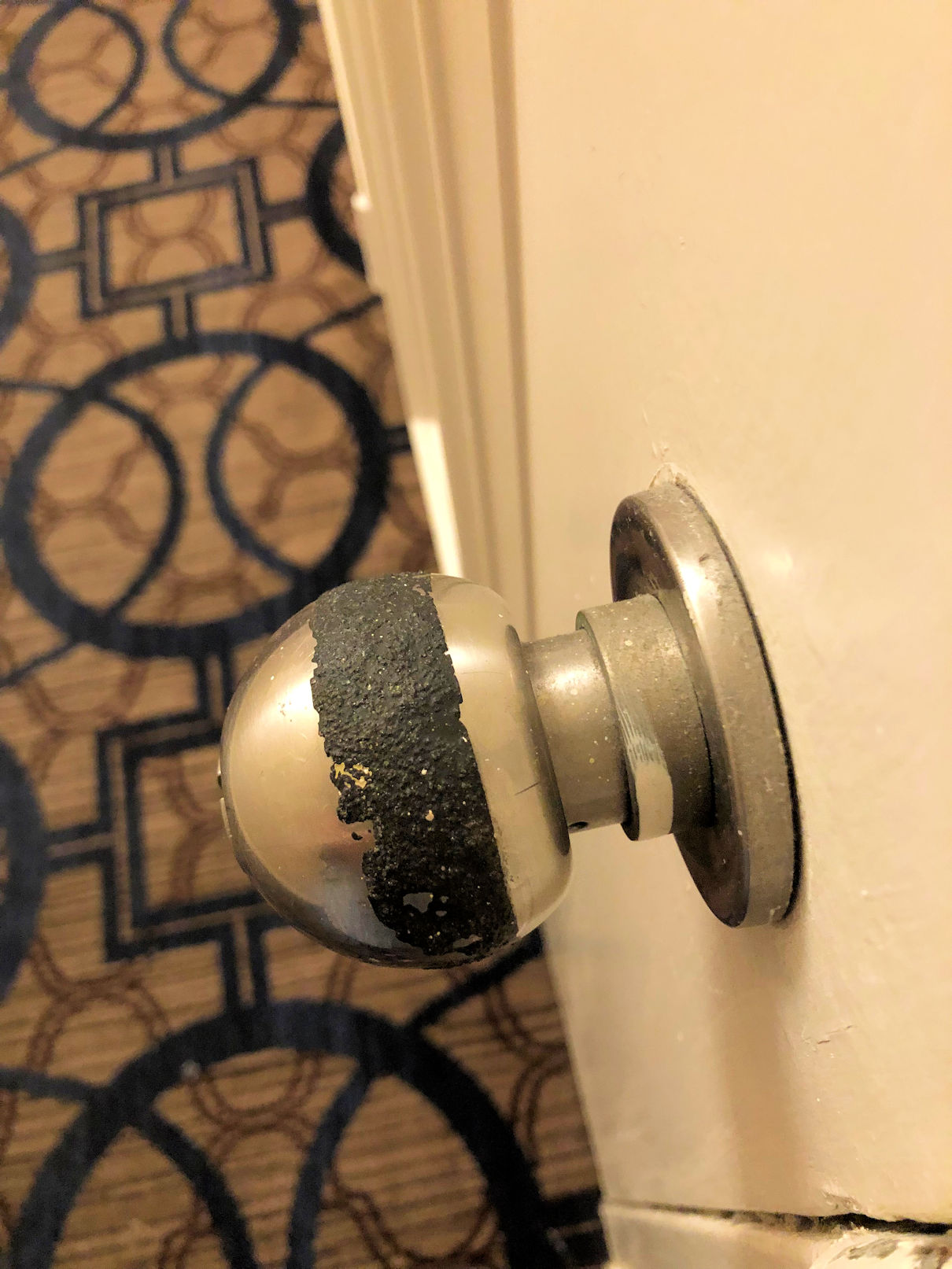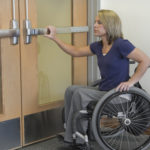I have one last photo from my time in New Orleans, which relates to today’s Quick Question:
When are tactile warnings required for the hardware on rooms housing hazardous equipment, like electrical rooms?
Here’s the photo…it’s a knob on a door to an electrical room in a hotel, and an abrasive strip has been added to the hardware:
There was a reference to tactile warnings on hardware in the 1986 edition of ICC A117.1 – Accessible and Usable Buildings and Facilities. This edition of the standard required hardware on doors leading to hazardous areas to have a textured surface. The intent was to mandate a way to warn people with vision impairments that they were entering a potentially dangerous room. Although a few state accessibility standards and the UFAS standards still require the tactile warning for door hardware, it is not required by the current ADA standards or ICC A117.1.
Recent editions of the accessibility standards do include requirements for “detectable warnings”, but those are not the same as tactile warnings. Detectable warnings are defined by the standards as: “A standardized surface feature built in or applied to walking surfaces or other elements to warn of hazards on a circulation path.” They are raised “bumps” in the floor or sidewalk, and they are usually required at transportation platform edges and similar changes in level.
So the short answer to today’s Quick Question is…tactile warnings on hardware are required in very few jurisdictions, and only where required by the local accessibility standard or when the UFAS standards apply. For more information on the current requirements for tactile warnings, refer to this Decoded article.
You need to login or register to bookmark/favorite this content.










I sold a fair amount of tactile hardware prior to ADA, and little since. I always wondered about the need for that warning surface as most doors requiring tactile hardware were also storeroom function locksets and a key would have been required for entrance.
This reply may not sit well with some. In my 35 years as the person in charge of large hospital facilities, I have never encountered anyone or any situation in which tactile efforts would have been any use. The buildings had multiple parallel and intersecting corridors and there would be no way someone who could not see would be left unaccompanied. I never witnessed anyone using the braille signs which at one time were a requirement, feeling their way along the walls, trying to find a room number. I don’t mind taking steps to help building visitors but merely feel that the requirements I have observed over 35 years of spending most of my waking life were rather wasted efforts. Door to any hazardous areas were self-closing and locked upon closing.
Probably folks will point out that the type of buildings I am familiar with are exceptionally complex and have the staffing to help lead people in them. Other opinions?
Lorie,
Of course Massachusetts is special and the AAB 521 CMR section 26.11.4 or requires door opening into hazardous areas shall have knurled or has roughen surface to give tactile warning… shall include but not limited top loading platform, boiler rooms and electrical rooms
You are correct, Curtis! Mass is one of the few states that require it.
– Lori
Lori: I find a knob with tactile surface somewhat disconcerting. If we are talking about electrical rooms with high voltage requirements, the door is required to have an exist device on the interior and a lever on the exterior with tactile surface. I have never specified a panic device with a knob. Am I correct? David Kenyon RA, CSI
Hi David –
I think in the case of this particular knob, it has been around for a long time. I haven’t specified a knob for years. But I’m interested in your comment that the high voltage electrical room would require panic hardware and a lever on the outside with a tactile surface. Where do you find the requirement for the tactile warning here?
– Lori